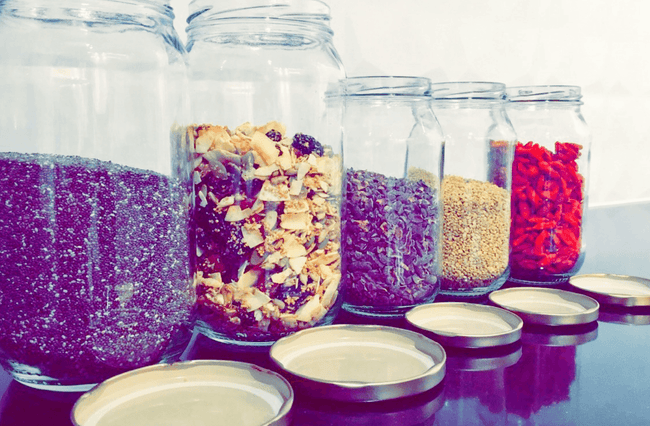The 7 Best Non-Skincare Skincare Tips

You think you’ve got it all down: cleansing, toning, moisturizing, exfoliating, masking - the whole situation. But your skin still looks tired. Or maybe your pigmentation just won’t go away. Or that stubborn forehead wrinkle is still there… and you’re only 35.
It turns out, your skin is influenced by many different factors, including lifestyle choices, which can be to blame for poor skin. Here’s my advice on how to keep your skin looking amazing.
Tip #1
Don’t smoke
Like, ever. This is the biggest skin sin (and will lead to a whole host of other health problems, too). Smoking causes vasocontriction – i.e. narrowing of the blood vessels - which makes it harder for oxygen to flow around the body. This can lead to premature wrinkles (no thank you) and can make it harder for scars and pigmentation to fade. Smoking also robs your skin of vital nutrients, including vitamin C, which is responsible for repairing skin damage.
Tip #2
Limit sugar
Sugar- (and to a lesser extent, dairy) causes inflammation of the body, and this includes the skin. Basically, when we eat sugar, our insulin levels spike, leading to inflammation. Too much inflammation, and our body begins to produce enzymes that break down collagen and elastin. This process is known as glycation, and it’s hell on skin. While I certainly don’t say no to the odd slice of birthday cake, I try to limit sugar as much as possible. Sugar can be hard to avoid, it’s hidden in all sorts of foods where you might not expect it. As a start I recommend replacing other drinks with water – not soda, not juices or smoothies or iced teas, or cocktails, just plain water.
Tip #3
Feed your skin
As much as possible, include foods that we know are amazing for our skin. Some of my favorites include:
· Foods rich in vitamin A: like salmon, broccoli, spinach and carrots
· Foods rich in zinc: like turkey, almonds and Brazilian nuts
· Foods rich in vitamin C: like oranges, papaya, lemon and carrots
· Foods rich in selenium: like tuna, salmon, garlic, eggs and brown rice
· Foods rich in omega 3 fatty acids: like salmon, sardines, almonds and sunflower seeds
Tip #4
Get enough sleep
Beauty sleep isn’t just a saying - when we sleep, our body recovers and recharges, and this includes our skin. Skin produces new collagen at night. Collagen promotes elasticity. And while we sleep, blood flows to the skin, delivering oxygen and nutrients for a more glowing and even complexion. And of course sleep can help combat dark, puffy under-eye circles. Aim for seven to nine hours a night - every night. If you have difficulty falling asleep, try switching off all screens at least one hour before bed, going alcohol-free and caffeine-free after 2pm, or eating an earlier dinner. Make sure your room is nice and dark, devices are switched to silent or airplane mode, and try and maintain a consistent bedtime to build a routine. I use a satin pillow to avoid facial creases and try to fall asleep on my back to avoid wrinkles (I usually end up on my side anyhow, but we can try!)
Tip #5
Limit stress
While it can be hard to avoid altogether, try to reduce stress as much as possible. Stress causes a chemical reaction in your body that can cause both skin sensitivity (i.e. breakouts and rashes) and make conditions like rosacea and acne more difficult to treat.
Tip #6
Exercise
Funnily enough, exercising lowers stress - so this is a win-win! Exercise also promotes healthy blood flow, which helps keep skin vibrant and healthy. It can also help keep skin elastic and firm. Win, win, win! The most important aspect of exercise is that you do something you enjoy – if you hate running or spinning, do some yoga or dance or walk the dog.
Tip #7
Be Sun Smart
It really should go without saying, but the only safe tan is a fake tan. Tanning causes skin to lose moisture, age faster (through damage to collagen), and hyper-pigment. Additionally, tanning greatly increases your risk of skin cancer. That said, vitamin D - which is essential for healthy bones - is mainly obtained through exposure to sunlight, so we definitely need some sun for good health. How much sun exposure you need for healthy vitamin D levels depends on where you live and the amount of sunlight, but most of us should be able to meet our vitamin D needs from exposing our forearms to the sun for just a few minutes a day.
So, what should you do to protect your skin when out in the sun? I recommend wearing a broad-spectrum (UVA and UVB) sunscreen everyday to protect your skin. Many cosmetic brands now also offer tinted moisturizers with inbuilt SPF which don’t have the thick, waxy consistency or shiny look of traditional sunscreens. Don’t forget when applying sunscreen that your face does not stop at your chin - your neck and décolletage are equally vulnerable and likely to be exposed. Sunglasses are also important - they will protect your eyes and the skin around your eyes which is really sensitive, and stop you squinting (less wrinkles!). People who are really serious about their sun exposure should wear broad brimmed hats (there are some very chic Panamas and boaters around) and cover up - even a thin cotton shirt will offer some sun protection for your décolletage. Additionally, shades of deep blue have been shown to provide more UV protection than white or pastels (they absorb more UV, reducing exposure).



